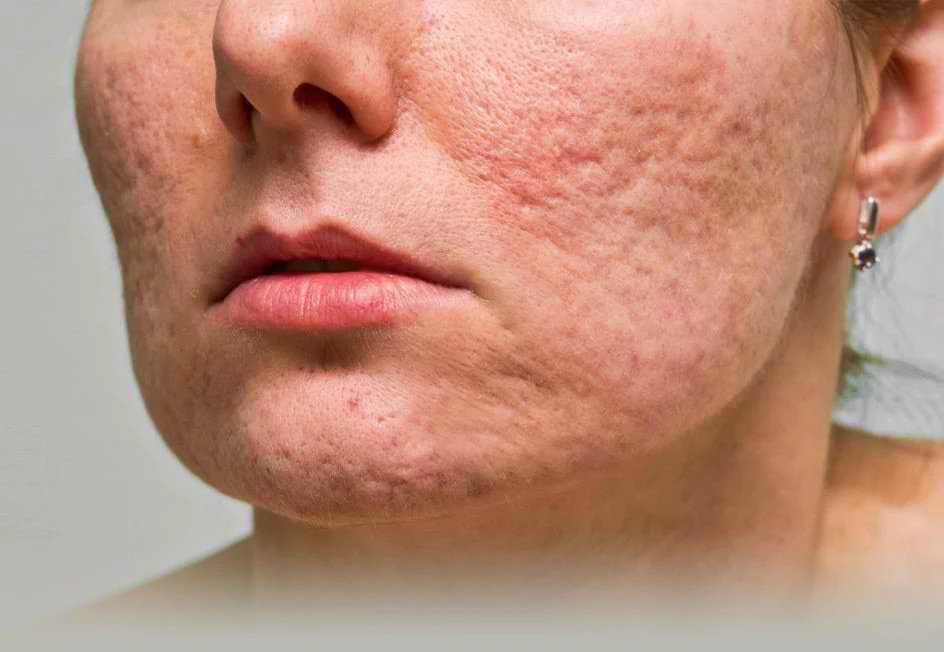Scarring
What is Scarring?
A scar is the body's natural way of healing and replacing lost or damaged skin. A scar is usually composed of fibrous tissue. Scars may be formed for many different reasons, including as a result of infections, surgery, injuries, or inflammation of tissue. Scars may appear anywhere on the body, and the composition of a scar may vary. A scar may appear flat, lumpy, sunken, or colored. It may be painful or itchy.
Scars are a natural part of the body’s healing process. Following the loss of supporting tissue like collagen, scar tissue differs in both colour and texture from the surrounding skin. How a scar looks will depend on how new it is, where it is, and the type of scar it is. The appearance of scars can also vary depending on your skin tone and your individual healing response.
Please get in touch to book a scarring treatment at our luxury skin and aesthetics clinic in Bishops Waltham.
Types of Scarring
Common Types of Scarring are:
Atrophic Scars – Due to the loss of fat and collagen, they appear as sunken scars and often have a pitted appearance. Atrophic scars are most commonly associated with acne and chicken pox, although those are not their only causes.
Hypertrophic Scars – These scars are the ones most of us would recognise as typical scars, with a raised look resulting from the overproduction of collagen during the healing process.
Keloid Scars – An excessive form of scarring which often grows beyond the original injury site. They can also occur as a reaction to body piercings, alongside the usual causes of scars, and are far more common in individuals with darker skin tones.
Atrophic Scar
Hypertrophic Scar
Keloid Scar
Acne scarring
Acne scars are the result of inflammatory acne lesions, such as cysts, pustules, and papules. These lesions occur when the pore becomes engorged with excess sebum (oil), dead skin cells, and bacteria, leading to a rupture in the follicle wall. When this happens deep within the skin, the material spilled into the surrounding tissue creates deeper lesions. The skin attempts to repair these lesions by producing collagen — the building block of skin tissue. If the body produces too much or too little collagen, an acne scar can form.
Types of Acne Scars
There are several types of acne scars. Their appearance can vary widely depending on the type and severity of the acne that caused them. It is important to understand the differences between them as this is what determines the most effective treatment for acne scarring. These are the most common types of acne scars:
Boxcar Scars
Wide, U-shaped scars with sharp, defined edges are called boxcar scars. They can be either shallow or deep. The shallower ones can be treated with resurfacing treatments, while the deeper ones might require more invasive procedures, like punch excisions. They are most commonly found on the cheeks and temples.
Ice Pick Scars
Named for their narrow, V-shaped appearance that looks like small round or oval holes, as if made by an ice pick, these scars are typically deep and less than 2mm wide. Due to their depth, ice pick scars are often the hardest to treat with surface-level treatments and might require procedures like TCA CROSS (Trichloroacetic Acid Chemical Reconstruction of Skin Scars) or punch grafting.
Rolling Scars
Characterised by their wave-like or rolling appearance, these scars are broad depressions with sloping edges due to damage under the skin’s surface. Rolling scars are often the result of long-term inflammatory acne and are caused by bands of scar tissue that form under the skin, giving the surface a rolling and uneven appearance. Subcision or laser treatments are often recommended for these types of scars.
Hypertrophic Scars and Keloids
Both of these scars are raised and firm. Hypertrophic scars stay within the boundaries of the original acne lesion and are usually the result of severe acne types, like nodular or cystic acne. Keloid scars, on the other hand, extend beyond the boundaries of the original lesion and can continue to grow over time. They appear raised and are usually darker than the surrounding skin. Effective treatments for both types include corticosteroid creams, tapes or injections, silicone sheets, cryotherapy, laser therapy, or surgical removal in severe cases.
Scar treatments
Skinpen® Microneedling
Microneedling uses needles to create columns of micro-injury to the skin, stimulating a natural healing response creating new collagen and elastin, remodelling scars, improving skin quality, tone and texture.
Chemical Peels
Chemical peels improve the appearance of acne scars by using a chemical solution to remove the outer layer of old skin. The new skin that replaces it is smoother and less scarred in appearance.
Dermalux® LED
Scars emerge as a result of the body healing substantial wounds, characterised by fibrous tissue that is thicker and tougher than the surrounding skin. LED light therapy can assist in scar treatment, breaking down, shrinking and minimising their appearance by activating the body's natural skin healing mechanisms, as well are helping with wound healing and stimulating healthy new collagen and elastin.
Customised Skincare
A bespoke skincare regime using our medical-grade products can help with skin cell turnover, increased collagen and elastin production and pigmentation, all helping with the appearance of scars.






